Wild Ones celebrates the month of Oaktober with highlights from Doug Tallamy’s presentation on his new book, The Nature of Oaks: The Rich Ecology of Our Most Essential Native Trees
Planting Oaks
How do you plant an oak tree? Plant an acorn! Plant acorns when nature drops them in the fall, just below the soil surface as a jay would plant them. Acorns planted directly in the ground will have the best chance of success.
If conditions are moist when collecting fallen acorns and the root radicle is emerging, adjust the acorn with the radicle pointing downwards to penetrate the ground and cover with a thin layer of soil. Mark the location and add a deer cage if the area is prone to browsing.
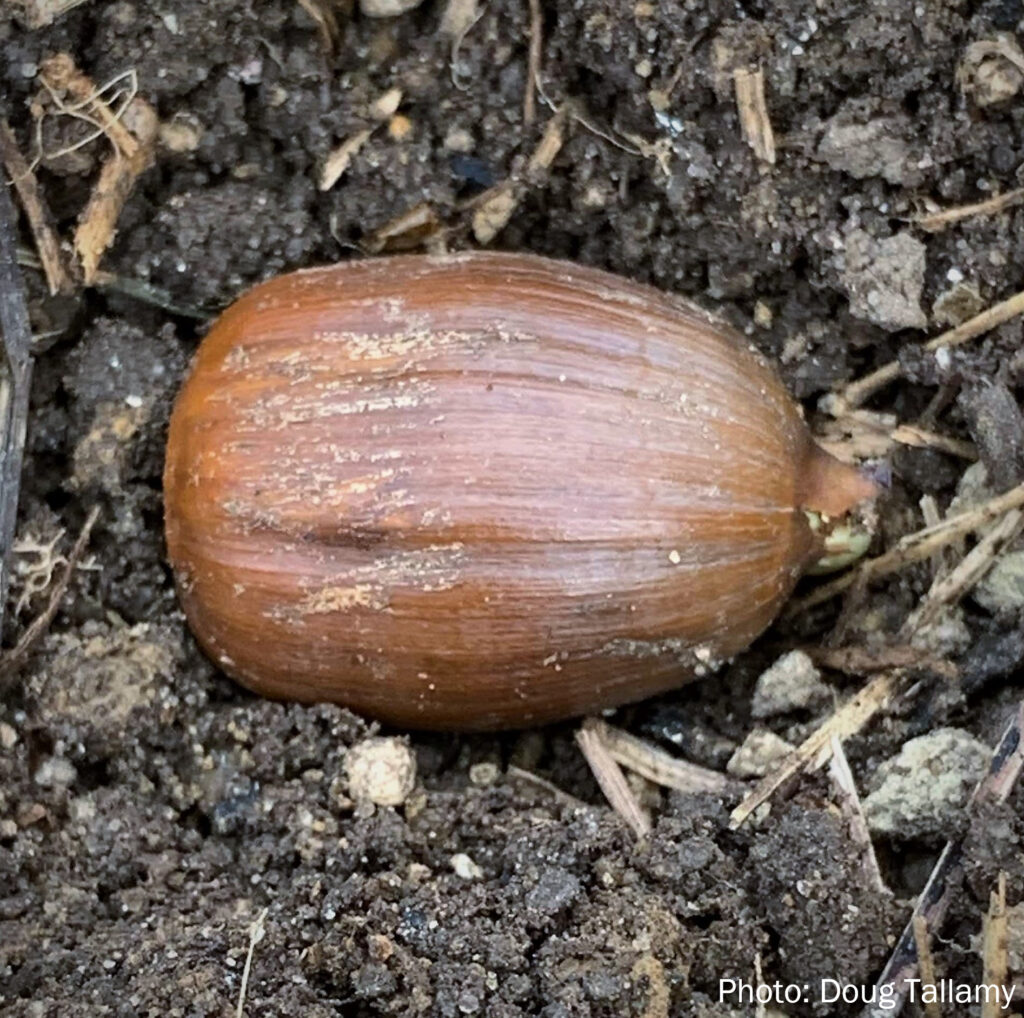
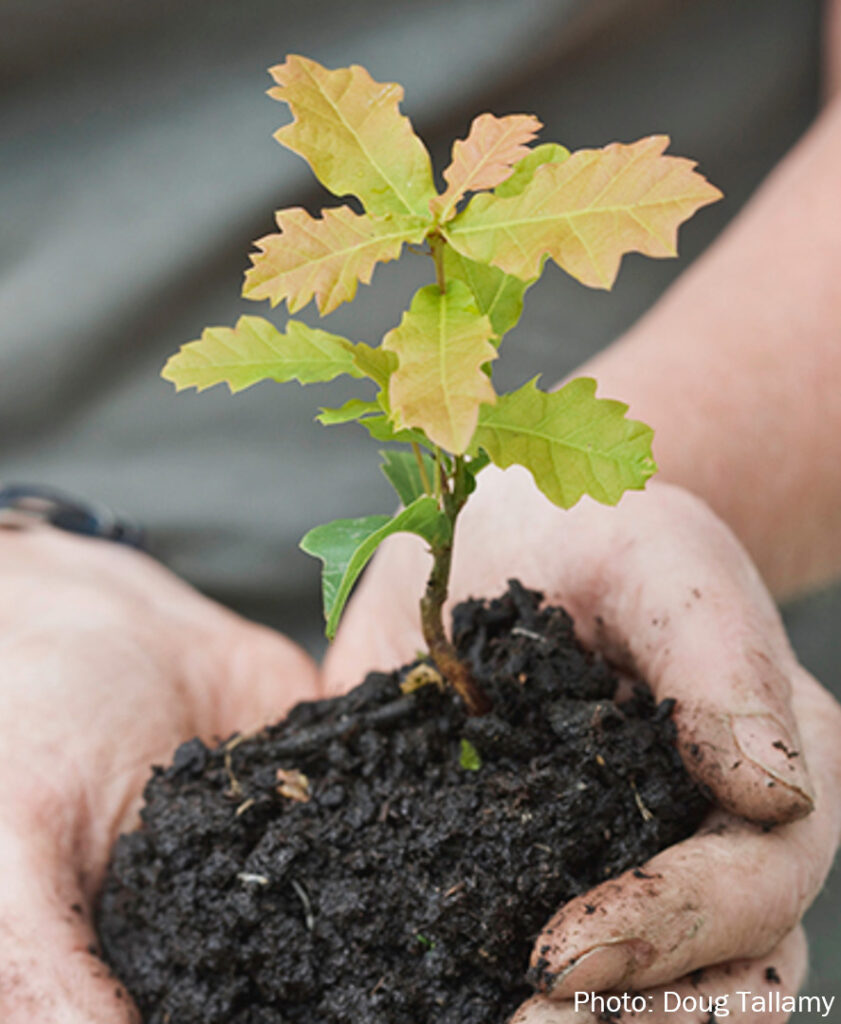
Acorns can be planted in pots in the fall. Choose a deep pot to allow for ample root growth; in their first year, oak seedlings grow ten times the amount of root biomass than leaf biomass. Fill the pots with soil, plant an acorn (as described above), label the pot and water as needed to prevent dehydration and desiccation. Acorns will sprout and begin growing roots in the fall; leaves will not emerge until the following spring. Protect pots from severe cold and insulate them from temperature swings by trenching them in the ground or piling leaves or compost around them. Keep the soil and roots hydrated and insulated by piling snow on the pots. Protect the pots from squirrels and other hungry critters by covering them with chicken wire or hardware cloth. Transplant seedlings into the ground the following fall or second spring before the tree becomes root bound.
Many nurseries sell container-grown oak trees. If not tended properly, root-pruned and potted up frequently, these trees tend to suffer from girdling roots and have a low survival rate when planted into landscapes. Growers also sell balled and burlapped trees; these trees struggle because most of the root mass was severed when the tree was spaded out of the ground. It can take years for a balled and burlapped tree to recover and regrow a healthy root system. An oak tree planted as an acorn will catch up with a 3” caliper, 18’ tall tree in a decade at virtually no cost and will be a more resilient tree in the future.
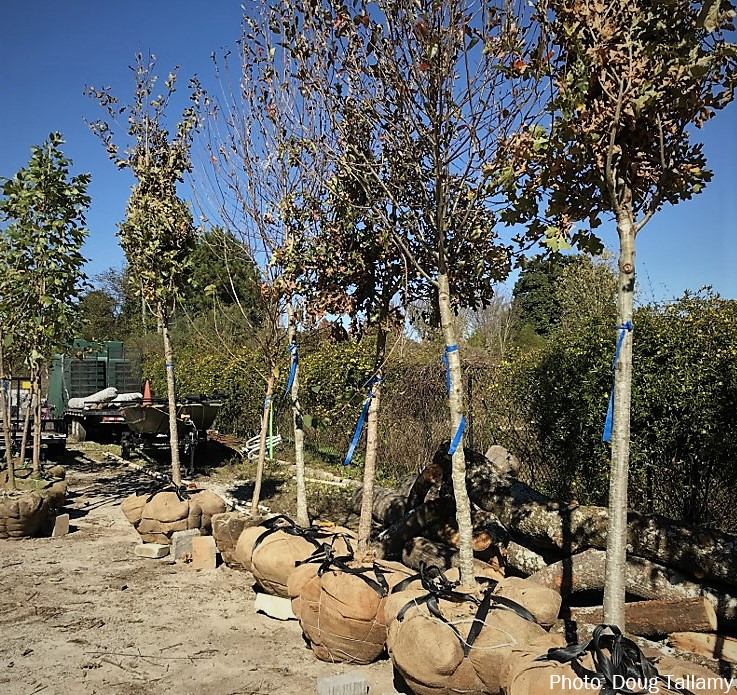
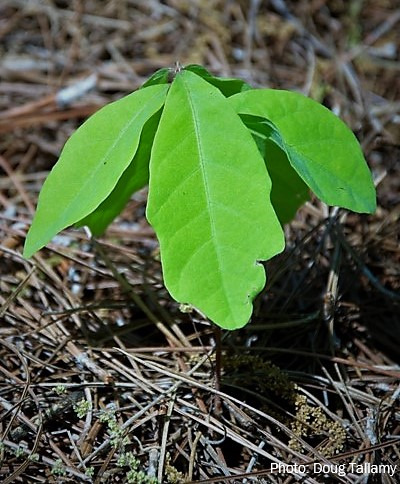
When it comes to planting trees, smaller is better, and seed-grown is best. When landscaping with native plants, nature is our best teacher.
Doug Tallamy unpacks myths about oak trees and discusses the cost and best practices for planting oak trees beginning at 23:25.
Disease & Diversity
In the Q&A following his presentation, Tallamy addressed the concerns of many audience members about the susceptibility of oaks to disease. Why should people plant oak trees if they are destined to succumb to oak wilt or another fatal exotic pest or pathogen?
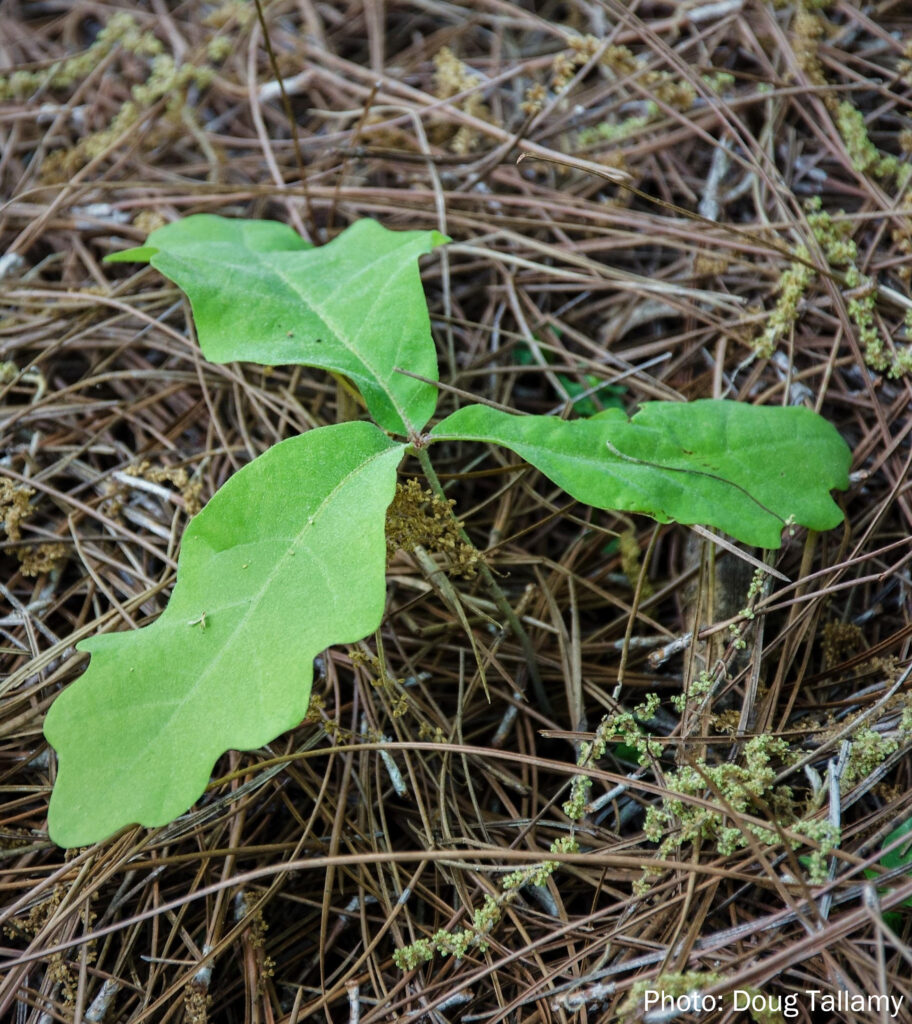
Speaking in general terms (Dr. Tallamy is an entomologist, not a plant pathologist), Tallamy explained that we want to be planting more oaks, not fewer, in order to identify and build up disease resistance. Exotic forest pathogens are typically highly virulent and often fatal; trees have not evolved with any resistance to them. If such a disease finds a small population of trees, the odds of it encountering any resistance are very low. In a large population of trees, while many trees will succumb to the disease, a few may live; those are the trees that will reproduce and will spread a degree of disease resistance to the next generation. Lacking a vaccine, the process of cultivating herd immunity is slow.
Diversity in the forest canopy is also critical to forest health. Like insects, many diseases specialize: pathogens require a particular genus or species as a host plant. Oak wilt is a fungal disease caused by the organism Bretziella fagacearum. Oak wilt is fatal for all the species in the red oak group (red oak, black oak, and pin oak); members of the white oak group (white oak and bur oak) are less vulnerable. Interplanting a diversity of species reduces the potential for widespread damage to the shade canopy. This issue is of particular concern in urban and suburban areas, where tax dollars are spent on trees along roadways and in public parks. Property owners should avoid planting monoculture windbreaks, screens and shade trees; planting species from different genera and families mitigates the risk of loss due to disease and insect damage.
How diseases spread in forests is not dissimilar to how they spread in human populations. As we have learned to protect ourselves during a global pandemic, we should learn best maintenance practices for our trees. Like the flu, pathogens are often seasonally active. For oak wilt, avoid pruning or otherwise wounding oaks mid-spring through mid-summer. Diseases and insect pests and carriers can easily be transported in logs or firewood. Avoid moving firewood to help prevent the spread of disease.
Is it wise to invest thousands of dollars to plant nursery-grown oak trees in regions where oak wilt is pervasive? Probably not. Should we be planting acorns by the thousands to help boost immunity in our urban and suburban forests? Absolutely.
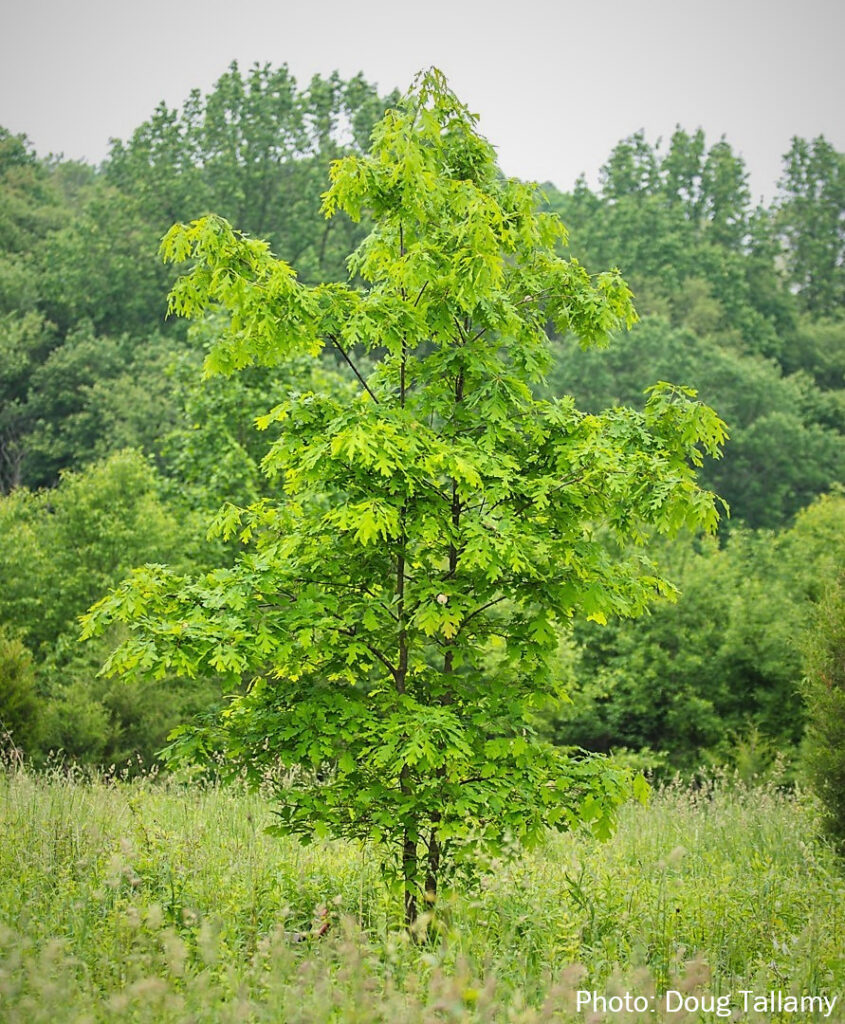
Listen to Doug Tallamy’s response to questions about oak wilt and other diseases and pests begins at 1:15:33.
Mutualism Between Oaks & Jays
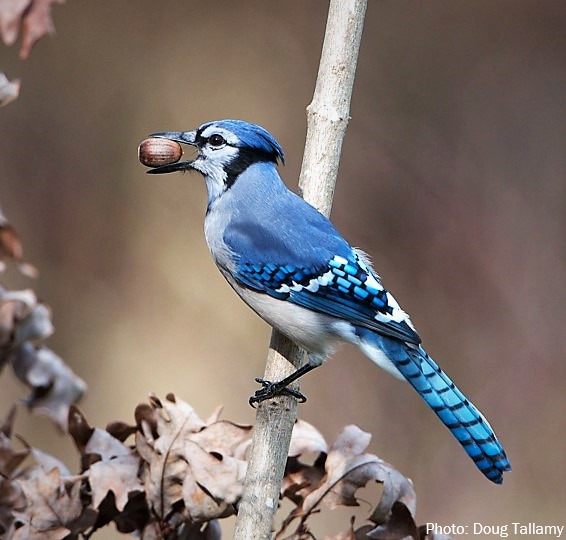
Jays depend on acorns for food, and oaks rely on jays for the dispersal of their seeds. Jays and oaks co-evolved in southeast Asia 65 million years ago. Jays collect oak acorns for winter forage, but they don’t cache them. Each acorn is buried singly, just below the soil surface. A jay will pick up an acorn, and then fly up to a mile before burying it. To feed during the wintertime, the jay will return to retrieve the acorns it buried in fall. Jays are members of the Corvidae family and are extremely intelligent. A single Jay can bury up to 4500 acorns each fall (that number will vary depending on the abundance of acorns in a given year). And while jays have powerful memories, they only remember where one out of every four acorns was buried, which means that a single jay can plant 3360 oak trees each year. If that jay succumbs to disease or gets caught by a raptor, it won’t retrieve any of the acorns it planted, and that number goes up.
The distance jays fly from the parent tree is farther than any other acorn disperser will move. Because they cover such a wide area when building up their winter food stores, jays assist oaks with dispersing their seeds faster than any other tree genus in the world. This mutually beneficial relationship between oaks and jays maintains the health of oak savannah and woodland ecosystems.
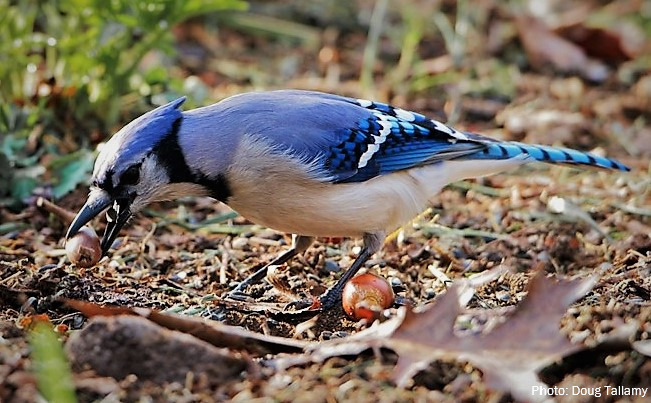
Doug Tallamy begins his discussion of oaks, acorns and the relationships both have with jays at 10:00.
Roots Before Shoots

“The best time to plant a tree was twenty years ago. The second-best time is now.” – Chinese Proverb
A common misconception about oaks is that they are slow-growing trees. It is true that young oak trees prioritize root growth. Oaks invest in robust root systems before growing much above ground. Doug Tallamy explains that people have the impression that oaks grow very slowly, “because in the beginning, it seems like they’re growing slowly, but actually that very first year they’re not growing slowly, they’re just growing underground; you can’t see it. Oaks grow ten times more root biomass the first year than leaf biomass.”
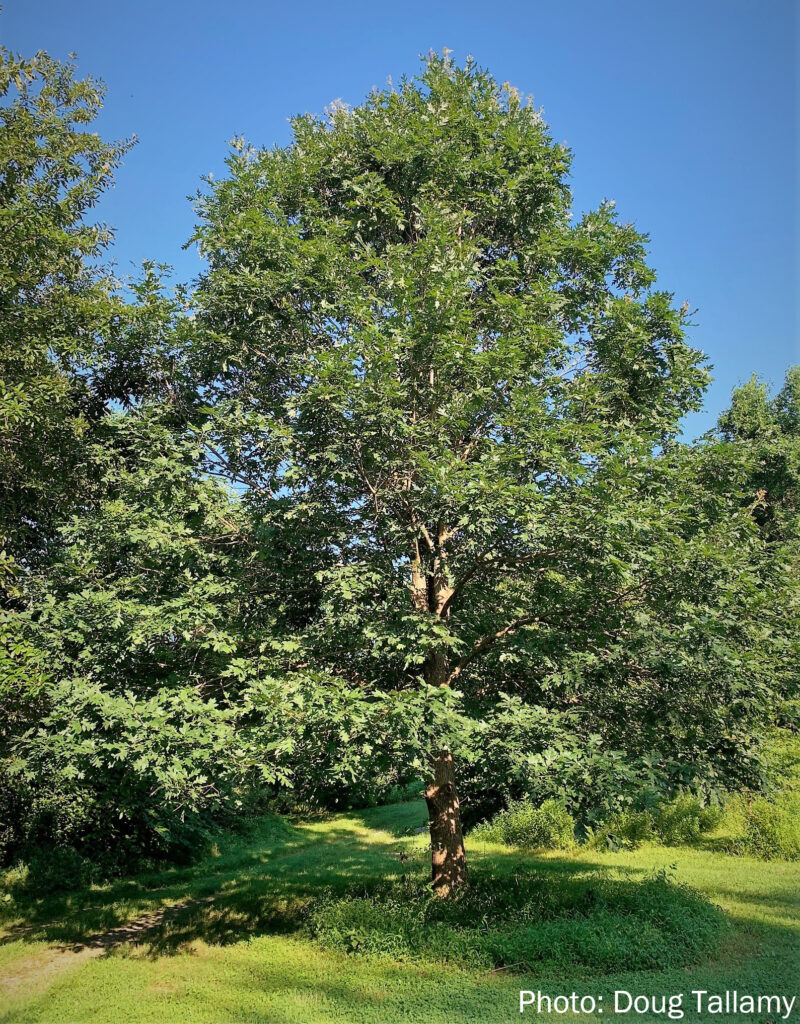
In just eighteen years a white oak tree that Tallamy planted from an acorn has grown into a sizable shade tree, standing 45 feet tall with a 47-inch trunk and a canopy spread of 30 feet. If you practice a little patience you, too, will enjoy the many benefits of these stately trees. Plant an oak today.
Do oak trees grow slowly? Doug Tallamy addresses this and several other myths about oak trees at 26:30.
Marcescent Leaves
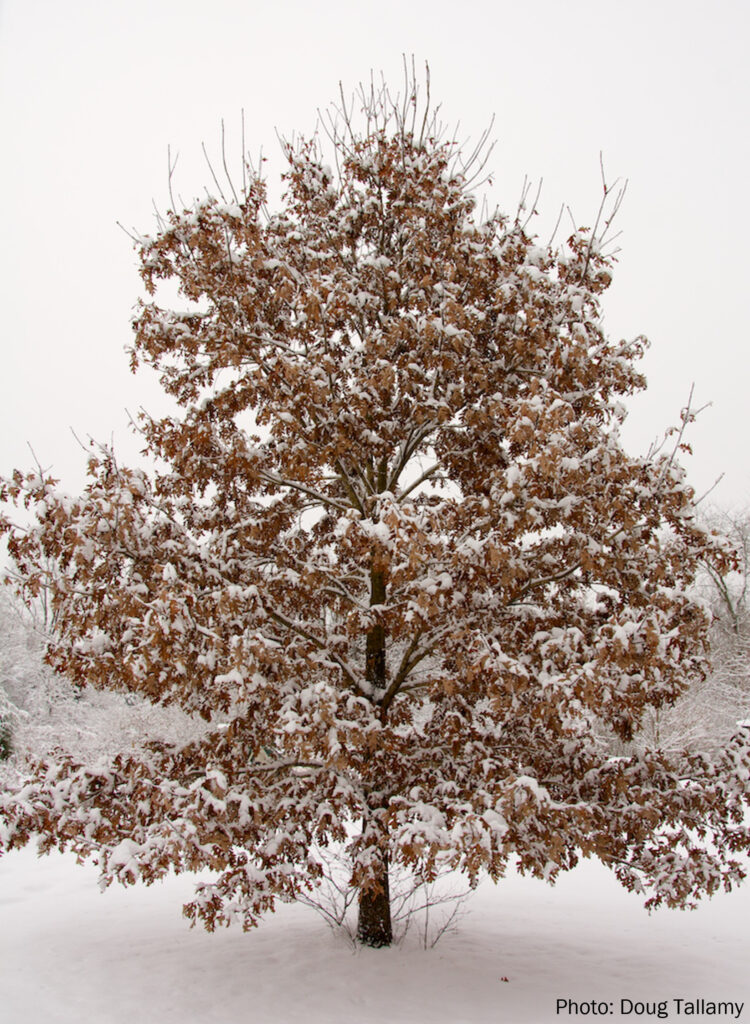
Through the month of October neighborhoods are bombarded with the near-constant drone of leaf blowers. Many species of oaks are “everciduous” and retain their dried, brown leaves through much of the winter, minimizing the shower of leaves in the fall and the need to rake or blow. This is process is called marcescence.
Marcescent leaves provide winter interest to landscapes, adding both tawny shades and rippled texture, contrasting the fluffy greens of conifers. These everciduous oak trees offer year-round screening of unsightly views. As strong-wooded trees, oaks with marcescent leaves can be incorporated into windbreaks. The rustle of the wind through the crisp, brittle leaves adds a wonderful sound to the quiet winter garden.
Why do oak trees, particularly young trees, retain their leaves through the winter? Doug Tallamy offers a fascinating hypothesis around the phenomena of marcescent leaves at 18:02.
Oak Leaf Litter
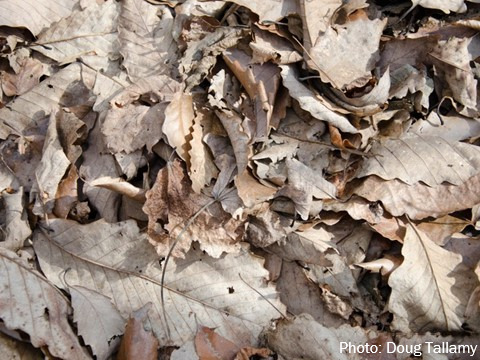
“Leave the leaves!” is the mantra of Wild Ones members to family, friends, neighbors and landscape maintenance personnel across the country. As Oaktober days grow short, leaves color and begin to drop. In the fall, deciduous trees shed the labor of the season, recycling nutrients collected over the spring and summer months. Forests naturally sustain themselves. By shedding their leaves, trees stock nature’s root cellar with enough food to support the following spring’s budburst and to share with the soil community that sustains them. This fallout provides a blanket of protection for the countless critters that dwell on and below the soil surface. Leaf litter reduces soil erosion, insulates soil from severe heat and cold, keeps the life in the soil hydrated, and provides critical habitat for overwintering insects.
Did you know that oak trees generate superior leaf litter? A mature oak tree produces 700,000 leaves. Oak leaves toughen over the course of the growing season and therefore break down more slowly than those of most other tree species. Oak leaf litter persists for up to three years, providing food and shelter for the web of life. The larvae of several species of butterflies and seventy species of litter moths forage primarily on oak leaf litter, not to mention the countless predators that feed on those caterpillars. So, leave the leaves, or gently rake them into beds where they can decompose over time and fulfill their critical role in support of your garden’s ecosystem.
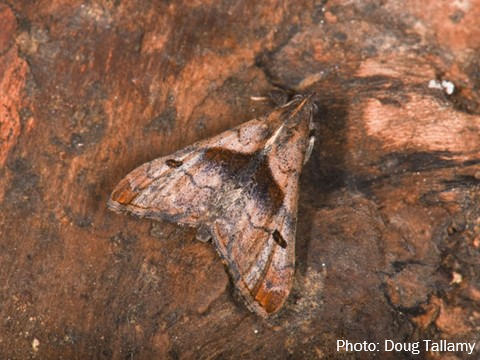
Join Doug Tallamy in the program at 35:25 to learn more about oak leaf litter and the life it supports.
